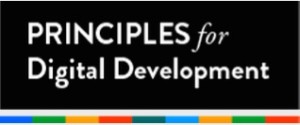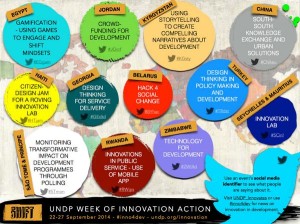Reminder: use the code “liberation” to get $295 course price.
TC309: mHealth – Mobile Phones for Public Health
In 2016, the number of global mobile subscriptions will reach 8.5 billion — more than the number of people on this earth, and it took a little more than 20 years for that to happen. Yet at the same time, health systems around the world are struggling to:
- Provide access to affordable healthcare for all
- Treat infectious diseases such as Ebola, HIV/AIDS, Malaria, and Tuberculosis
- Address crippling maternal and child mortality rates in low-income countries
- Manage non-communicable diseases like heart disease, cancer, and Diabetes
- Tackle infrastructure and supply chain challenges in remote settings
- Train frontline health workers to provide care to vulnerable populations
Increasingly, Ministries of Health, companies, NGOs, and various bilateral and multilateral donors are looking to mobile phones as part of a solution for responding to these challenges.
This four-week, online certificate course will focus on building mHealth skills that revolutionize approaches to patient care and management, point-of-care support, health education, remote monitoring, diagnostics, supply chain management & logistics and more.
A growing number of mHealth projects have been implemented across the world from Guatemala to Uganda, from India to Argentina – we will explore what has worked and what could be improved with each example, and invite participants to share their own experiences in managing ongoing projects.
Apply Now: https://www.techchange.org/online-courses/mhealth-mobile-phones-for-public-health/
Week 2: Strengthening Health Systems
Week 3: Citizen-Centered Health
Week 4: The Future of mHealth
Course Objectives
At the conclusion of the course, participants will be able to:
- critically analyze both the opportunities and the pitfalls that emerge when working with mobile technology to improve public health outcomes
- connect relevant development theories to the technological strategies and tools discussed in the course
- manage specific mHealth software platforms and tools
- design dynamic and effective strategies for using tools and platforms to improve mHealth efforts
- become more confident using mobile technology to address public health challenges
Course Methodology
- This course is delivered entirely online over a period of four weeks.
- This course features several live interactive guest expert sessions each week with leading practitioners, software developers, academics, and donors.
- Every live event is recorded and archived for you to watch later.
- This course also features a unique hands-on learning environment with animated videos, technology demos, practical activities, networking events, office hours, participant presentations, immersive simulations, and more.
- TechChange recommends budgeting a minimum commitment of 5-7 hours per week and scheduling time for the course around your existing obligations.
- Participants will have access to all course content for at least 4 months after course completion so the material can be completed and revisited later.
Course Price
- $295 if you use the discount code: “liberation”
- $495 if application and payment is submitted by course start date
- Group discount rates available. For more details, please contact us social@techchange.org.



